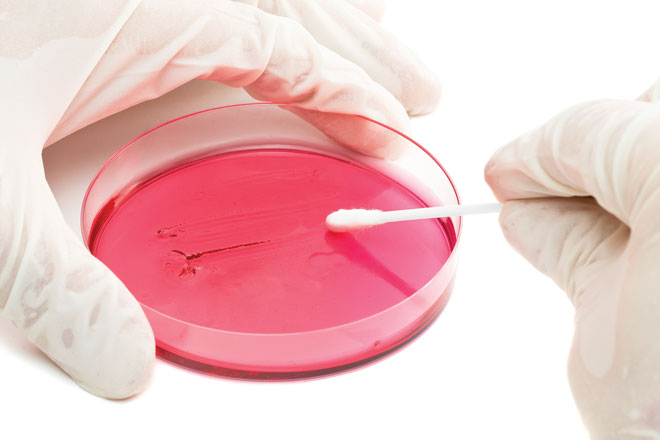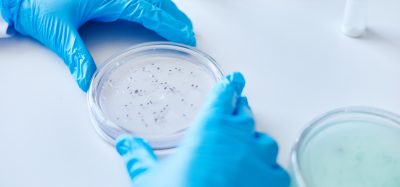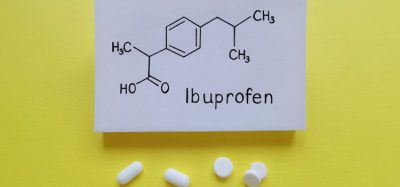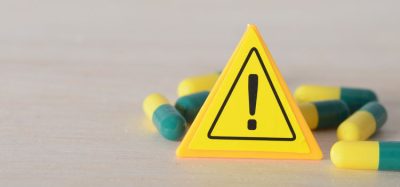Current activities of the USP general chapters
Posted: 24 August 2016 | Radhakrishna Tirumalai PhD (United States Pharmacopeial Convention) | No comments yet
From a microbiological perspective, pharmaceutical products fall into two categories – nonsterile and sterile. For both categories manufacturers must eliminate, or minimise, potential health risks to patients related to microorganisms and the toxins they produce, whilst maintaining product quality. Many contributing factors may affect the quality of a medicine or its ingredients, but microbial bioburden control and proper sterilisation methods are critical considerations for the manufacturer throughout the product’s lifecycle. This article outlines the scope and function of the United States Pharmacopeial Convention (USP) as well as the ongoing work of the Microbiology Expert Committee (Microbiology EC).


The USP is a global public health organisation that develops standards for the identity, strength, quality and purity of medicines, foods and dietary supplements and their ingredients. USP standards for medicines and their ingredients are published in the United States Pharmacopeia—National Formulary (USP–NF). USP has no role in enforcement of these or other provisions that recognise USP–NF standards; this is the responsibility of the US Food and Drug Administration (FDA) and other government authorities in the US and elsewhere.
USP-NF standards are published in the form of monographs, general chapters and General Notices. Monographs are developed for specific articles (for example drug substance, drug product, excipient, etc.) and general chapters can be applied across multiple articles. The identity, strength, quality and purity of an article are determined by the official tests, procedures, and acceptance criteria and other requirements incorporated in a USP monograph, in applicable general chapters, or in the General Notices. ‘Applicable general chapters’ refers to the general chapters numbered below 1,000 in USP–NF that are made applicable to an article through reference in General Notices, a monograph, or another applicable general chapter numbered below 1,000.
General chapters numbered above <1,000> in USP–NF are typically informational. They do not contain mandatory tests, assays, or other requirements applicable to any official article, regardless of citation in a general chapter numbered below 1,000, a monograph, or General Notices. The FDA may also require manufacturers to conform to USP standards that may not otherwise apply by the terms of USP–NF, if determined by the Agency to be within the scope of current good manufacturing practices (cGMPs). USP’s standards are recognised and used all around the world.
Through its Microbiology Expert Committee (Microbiology EC), USP develops and revises general chapters related to pharmaceutical microbiology. The Microbiology EC has established a comprehensive work plan for its five-year operating cycle. The work plan is intended to help meet USP’s standards-setting goals. Major initiatives in the current USP 2015–2020 cycle regarding microbiological contamination control include sterilisation processes, depyrogenation processes and sterility assurance. These key activities and the related modern microbiological methods are discussed as follows.
Sterility assurance and sterilisation
While all products purported to be sterile have to meet the requirements of General Chapter <71> Sterility Tests, sterility assurance can only be achieved by the use of robust sterilisation processes. USP’s current General Chapter <1211> Sterilization and Sterility Assurance of Compendial Articles addresses principles of sterility assurance and provides information on various sterilisation processes. In response to stakeholder feedback that greater detail is needed to address specific sterilisation methods, USP initiated a significant rewrite of the general chapter. The initial focus of this phase is on sterilisation, to be followed by sterility assurance. In determining how to update the sterilisation material in the general chapter (which was first published in the late 1980s), the Microbiology EC decided to split the content of the general chapter into two major parts – sterility assurance and sterilisation processes. Information related to the latter was removed from the existing General Chapter <1211> and developed separately as the <1229.x> series1.
The new series of general chapters (the ‘<1229.x> series’) is dedicated to individual sterilisation processes, with an overarching general chapter (<1229>) covering the overall concept of sterilisation.
To date, the Microbiology EC has developed sixteen general chapters, which provide valuable information and guidance on distinct methods of sterilisation and related topics. These are:
- <1229> Sterilization of Compendial Articles
- <1229.1> Steam Sterilization by Direct Contact
- <1229.2> Moist Heat Sterilization of Aqueous Liquids
- <1229.3> Monitoring of Bioburden
- <1229.4> Sterilizing Filtration of Liquids
- <1229.5> Biological Indicators for Sterilization
- <1229.6> Liquid Phase Sterilization
- <1229.7> Gaseous Sterilization <1229
- <1229.8> Dry Heat Sterilization
- <1229.9> Physicochemical Integrators and Indicators for Sterilization
- <1229.10> Radiation Sterilization
- <1229.11> Vapor Phase Sterilization
- <1229.12> New Sterilization Methods
- <1229.13> Sterilization-in-Place
- <1229.14> Sterilization cycle development
- <1229.15> Sterilizing Filtration of Gases.
Currently, fourteen of these chapters (the first fourteen in the aforementioned list) have already been approved for inclusion in USP–NF2. The other general chapters will be proposed for public comment in 2016 in the Pharmacopeial Forum3, USP’s free, online tool for public comment on USP’s standards. Some of the new official and proposed general chapters of the <1229.x> series are detailed below.
<1229.12> New Sterilization Methods
Commonly-available sterilisation processes are intended to eliminate microorganisms from the materials subjected to them. However, certain situations may arise whereby the user may need to develop and implement a new or novel sterilisation process. This chapter provides information on the important steps to be considered in such a situation.
<1229.13> Sterilization-in-Place
This chapter discusses sterilisation of a system or piece of process equipment in situ (sterilisation-in-place; SIP) to reduce the need for post-sterilisation handling. This chapter also provides information on the common elements of the SIP process; different physical methods used for performing SIP; and routine process control.
<1229.14> Sterilization Cycle Development
The process of sterilisation is not just a means of eliminating microorganisms but is also a process that may change materials in a manner that impacts usefulness, safety or both. Therefore, the proper development and implementation of a sterilisation process requires a number of important sequential steps. This new chapter proposal <1229.14> provides general principles of Sterilization Cycle Development.
<1229.15> Sterilizing Filtration of Gases
Sterilisation processes are divided broadly into two categories: destruction of microorganisms and their physical removal from the material being sterilised. Autoclaving is an example of the former and sterilising filtration is an example of the latter. Sterilisation of gases that come into contact with sterile components, containers and closures, and product contact surfaces of processing equipment, is typically accomplished by passing the gas through one or more sterilising-grade membrane filters. This new chapter proposal <1229.15> provides an overview of the general principles of Sterilizing Filtration of Gases, including types of filters used; retention mechanisms; and validation of the filtration process.
In a major revision currently taking place, General Chapter <1211> MICROBIOLOGY SERIES VOLUME 21 ISSUE 4 2016 European Pharmaceutical Review 33 USP’s standards are recognised and used all around the world will be renamed Sterility Assurance. This chapter will describe the principles and controls involved in the preparation of articles that must be sterile. The sterility of an item is achieved through the implementation of design and operational controls. These controls provide sterility assurance, rather than the results of any in-process or finished goods testing.
Specific controls for sterile product manufacture are required by regulations and standards, including those found in the United States at 21 Code of Federal Regulations (CFR) Part 211 Current Good Manufacturing Practice for Finished Pharmaceuticals, and 21 CFR Part 600 (biologics), as well as EMA Annex 1 Sterile Medicinal Products, ISO, ICH, WHO and others.
A suitable sterility assurance programme for a product requires preliminary information regarding its formulation, manufacturing process and primary container. By applying the principles defined in Sterilization of Compendial Articles <1229>, an initial determination should be made regarding the potential for terminal sterilisation of the drug product in its primary container. As described therein, the appropriate process provides a balance between conditions that are lethal to potential bioburden present in/on the drug product and those that preserve its essential quality attributes. Depending upon the results of that determination, the drug product will be made by either aseptic processing or terminal sterilisation. A process that relies on both the protective measures inherent to aseptic processing and the lethal nature of terminal sterilisation may offer advantages. Regardless of the process selected, establishment of design, operation and monitoring systems are required to provide the necessary confidence in the outcome.
Major initiatives in the current USP 2015–2020 cycle regarding microbiological contamination control include sterilisation processes, depyrogenation processes and sterility assurance
Depyrogenation
Parenteral products not only need to be sterile, but also free from harmful levels of pyrogens, or fever-causing agents. For the purposes of this chapter series, ‘depyrogenation’ refers to the destruction or removal of bacterial endotoxin, the most prevalent pyrogen. Depyrogenation may be accomplished by a variety of methods and processes which can be combined to assure endotoxin reduction to a safe level. The intent and processes for depyrogenation are very different from those of sterilisation. Thus, for greater clarity, the methods used for depyrogenation have been separated into the <1228.x> series of general chapters. Commonly-used depyrogenation processes and associated control measures are the subject of this chapter series:
- <1228> Depyrogenation
- <1228.1> Depyrogenation by Dry Heat
- <1228.2> Depyrogenation by Chemical Inactivation
- <1228.3> Depyrogenation by Filtration
- <1228.4> Depyrogenation by Physical Means
- <1228.5> Endotoxin Indicators for Use in Depyrogenation
- <1228.6> Endotoxin Control and Monitoring
- <1228.7> Other Endotoxin Reduction Methods
Currently, four of these (shown in bold in the list) have already been approved for inclusion in USP–NF2.
Some of the highlights from the new depyrogenation series of general chapters are detailed below.
1. The series emphasises that prevention and control of bioburden, particularly Gram-negative bioburden, must be the primary focus for avoiding endotoxin contamination in drug substances, process materials and drug products.
The control of endotoxins in parenteral products is really a matter of the control of Gram-negative bioburden in or on raw materials, equipment, water systems and in the environment. Three levels of process control are presented in <1228>:
- Input control is a series of preventive measures, consistent with the essential elements of Quality by Design, that are meant to control potential endotoxin contribution by formulation components (active pharmaceutical ingredients, excipients and water); primary packaging components (containers and closures); equipment, and the manufacturing environment including personnel;
- Product-specific process control requires identification of critical control points (CCPs) for endotoxin introduction, or removal of endotoxins using principles of good process design and a processoriented risk management tool, such as hazard analysis critical control point (HACCP). Once CCPs have been identified, the firm must validate control or depyrogenation methods used at the CCPs to assure that endotoxins remain at safe levels, meaning well below the product-specific endotoxin limit
- Direct control is the proactive destruction or removal of endotoxins from product streams, product contact equipment and primary packaging. Direct control must be validated. Assuming that input and process controls are in place and working properly and that the process has not changed, a firm may justify a reduction in the need to provide frequent or recurring endotoxin or lipopolysaccharide (LPS) challenges upon revalidation
2. Owing to the fact that formulated Reference Standard Endotoxin and Control Standard Endotoxin (CSE) calibration standards are not contaminants in pharmaceutical product streams, <1228.5> Endotoxin Indicators for Depyrogenation contains guidelines for making laboratory-derived endotoxin that more closely mimics ‘real life’ contamination.
The terms ‘endotoxin’ and ‘LPS’ are often used interchangeably, but in fact they are not the same material4,5. Endotoxins exist as vesicles or ’blebs’ in the outer cell membranes of Gram-negative bacteria6 . Cell wall fragments (dead bacterial parts) that are shed as part of the normal bacterial life cycle are the real-life contaminants in pharmaceutical raw materials, water systems, in-process samples and finished drug products. Purification of LPS from the Gramnegative cell membrane to make RSE and CSE calibration standards is a harsh and difficult process requiring extraction in phenol/water or phenol/chloroform/petroleum ether. As a purified preparation, the LPS, stripped of its cell wall components, will form micelles, ribbons and other aggregate forms in solution. The extent of the aggregation is largely dependent on the chemistry of the matrix in which the LPS resides. Given that many process stream depyrogenating agents rely on ionic attraction, filtration, or other physical or chemical means, the use of highly purified LPS may be an inappropriate analyte for depyrogenation studies, as it is chemically, biologically and structurally different to real cell wall fragment contaminants. Chapter <1228.5> includes guidelines for the identification of bacterial strains, along with methodology suggestions for the preparation, use, storage and documentation of laboratoryderived endotoxins.
3. The 1228.x series proposes that the current requirement to spike materials with at least 1000 endotoxin units and demonstrate a 3 log reduction in endotoxin or LPS spike, regardless of the product or level of contamination, be changed to demonstrate reduction of endotoxins to safe levels.
With the implementation of the principles QbD and risk management; improved control over raw materials; and improved manufacturing techniques that reduce human contact with product, the three log reduction ‘rule’ may no longer be relevant. <1228.x> proposes that assessment of process capability, historical data and risk can be used to develop a product-specific depyrogenation master plan that defines reduction based on ‘worst case’ pre-process endotoxin levels. This would include an appropriate safety factor as needed to establish a safe level, based on the endotoxin limit for the product or material.
4. <1228.1> Dry Heat Depyrogenation recommends that with a given combination of time and temperature that routinely depyrogenates in a dry heat process, it is not necessary to load vials with ≥1000 EU of an endotoxin standard and demonstrate a 3 log reduction in activity. While there is value in such a practice of using strategically-placed endotoxin challenges based on temperature mapping upon commissioning a new piece of equipment or with the implementation of new load patterns or equipment changes, there is no value in excessive endotoxin challenges upon revalidation of existing equipment and load patterns solely to meet the 3 log rule. Manufacturers can justify the reduction or elimination of endotoxin challenges on revalidation when load patterns and physical data demonstrate that time and temperature conditions have not changed.
Modern microbiological methods
Conventional microbiology tests found in the pharmacopoeias, such as sterility tests, rely on the demonstration of microbial growth. Limitations of these tests include their low sensitivity as well their time and labour-intensive nature. Certain cytotherapy, or regenerative medicine products, compounded sterile preparations and radio pharmaceuticals, are administered to patients prior to results from sterility testing. A more rapid result test would be very beneficial in such instances. USP is seeking to identify new referee tests or procedures based on modern methods that can detect and enumerate microorganisms in a more rapid and sensitive manner. Objectives for such test method development are that the method has to have broad application; required instrumentation or supplies cannot be single-sourced or patented; and the method hould beapplicable in any lab. A USP expert panel consisting of members with expertise in cytotherapy or regenerative medicine products, sterile compounding and radiopharmaceuticals as well as tech – nology experts, has been constituted to make recommendations on user requirements and resultant technologies for a rapid sterility test. Based on these recomm endations, a general chapter will be developed and published in a future PF for public comments.
Conclusion
USP is committed to continuous revision and improvement of its standards and values the input of users in the field. Indeed, this input is critical to the success, not only of USP, but of the industry as a whole. Stakeholder feedback helps to ensure that USP’s standards are sufficiently comprehensive in application or scope and reflect current industry practices.
Acknowledgements
Special thanks to Ms Karen McCullough for her critical review and suggestions and Ms Theresa Laranang-Mutlu (USP) for help with editing the manuscript.


Dr Radhakrishna Tirumalai has been at the USP since 2003 and is currently a Principal Scientific Liaison-General Chapters in the Science Division. He is the Liaison to the USP Expert Committee on Microbiology. He works with the industry, regulatory agencies and other external sciencebased organisations in the development and revision of General Chapters. Dr Tirumalai represents USP on PDA expert task forces and committees related to Microbiology and Sterility Assurance; on AAMI expert Working groups related to Microbiology, Sterilisation, Sterility Assurance and Biocompatibility; and on the editorial board of the FDA’s Pharmaceutical Microbiology Manual. Dr Tirumalai’s prior industry experience encompasses process and product research and development, transfer and product manufacturing. He has a PhD degree in biochemistry. He has authored numerous publications, review articles and several book chapters. He is a frequent speaker at conferences and has taught Pharmacopeial Microbiology courses at numerous locations globally.









